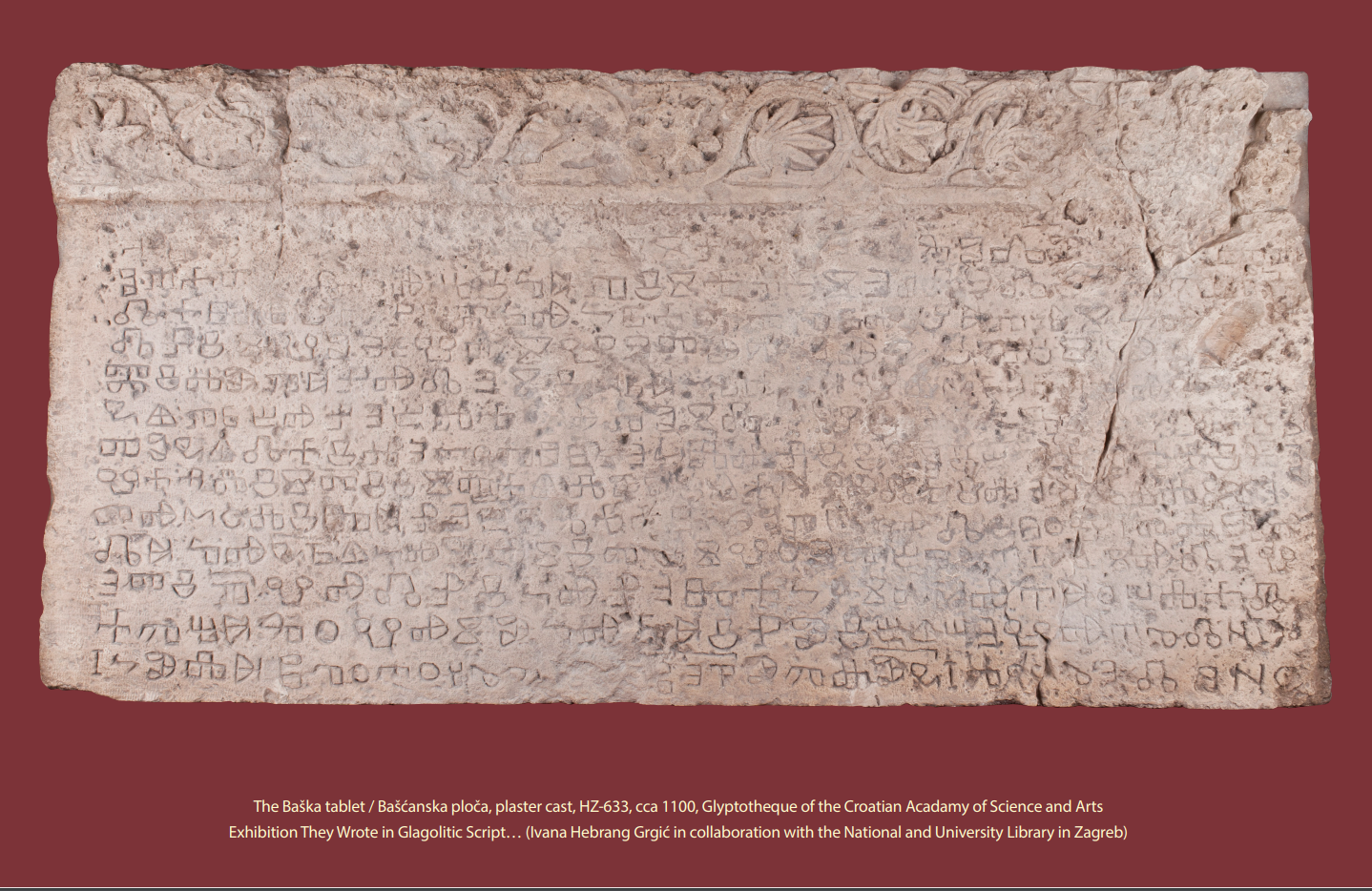The Baška tablet (Baščanska ploča) is the oldest monument featuring text in the Croatian language and the Glagolitic script, dating from around 1100. The tablet was found in the church of St. Lucy in Jurandvor, near Baška on the island of Krk. It is a stone tablet, 1 m high, 2 m wide and 9 cm thick. The inscription it bears is a deed of gift by which St. Lucy’s church was given land by king Zvonimir. In the text there is the first mention of the Croatian name written in the Croatian language (the king of Croatia – kralj hrvatski). After serving as the altar rail, the tablet was built into the church floor, owing to which it became severely damaged. The tablet is a significant starting point in the research of the Croatian language, literature and the Glagolitic script, also being relevant to the research of the Croatian political history. Since 1934, it has been preserved at the Croatian Academy of Sciences and Arts. A digital image of the tablet is available on the Glagoljica.hr portal of the National and University Library in Zagreb.
Source: Croatian Academy of Sciences and Arts and Croatian Encyclopaedia
In Portuguese:
A Placa de Baška é o monumento mais antigo escrito em língua croata, no alfabeto glagolítico, datado por volta do ano 1100. A placa foi encontrada na igreja de Santa Lúcia, em Jurandvor, perto de Baška, na ilha de Krk. É uma placa de pedra com 1 metro de altura, 2 metros de largura e 9 centímetros de espessura. Ela contém o texto de uma doação feita pelo rei Zvonimir, que cede um terreno à igreja de Santa Lúcia. Na placa, o nome “croata” aparece pela primeira vez escrito na própria língua croata (“rei croata”). A placa servia como divisória do altar, e por um período foi incorporada no chão da igreja. Como está bastante danificada, há diferentes interpretações para algumas partes do texto. Mesmo assim, ela é um ponto de partida importante para o estudo da língua croata, da literatura e do alfabeto glagolítico, além de ter grande relevância para a pesquisa da história política da Croácia. Desde 1934, a placa está sob os cuidados da Academia Croata de Ciências e Artes, em Zagreb.
Fonte: Academia Croata de Ciências e Artes, e Enciclopédia Croata
